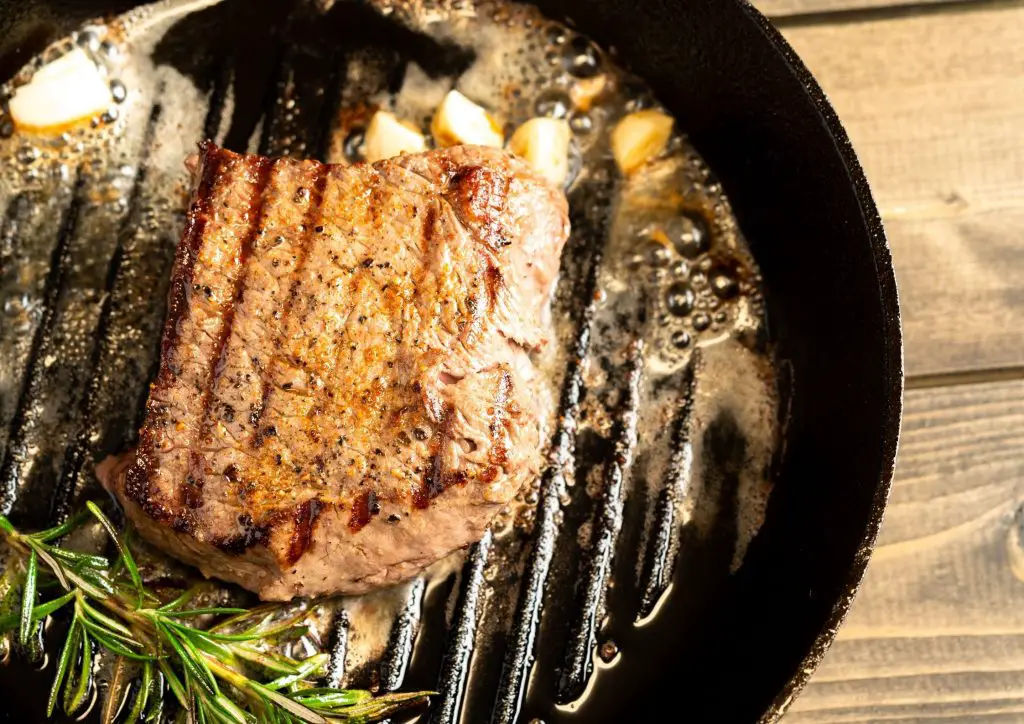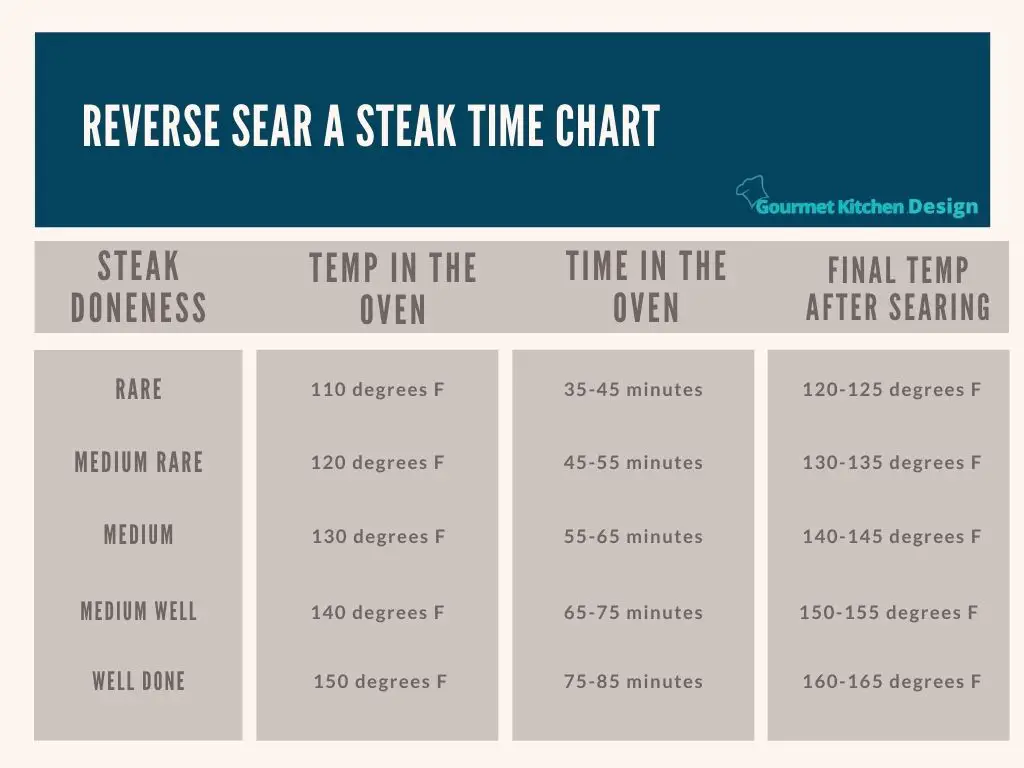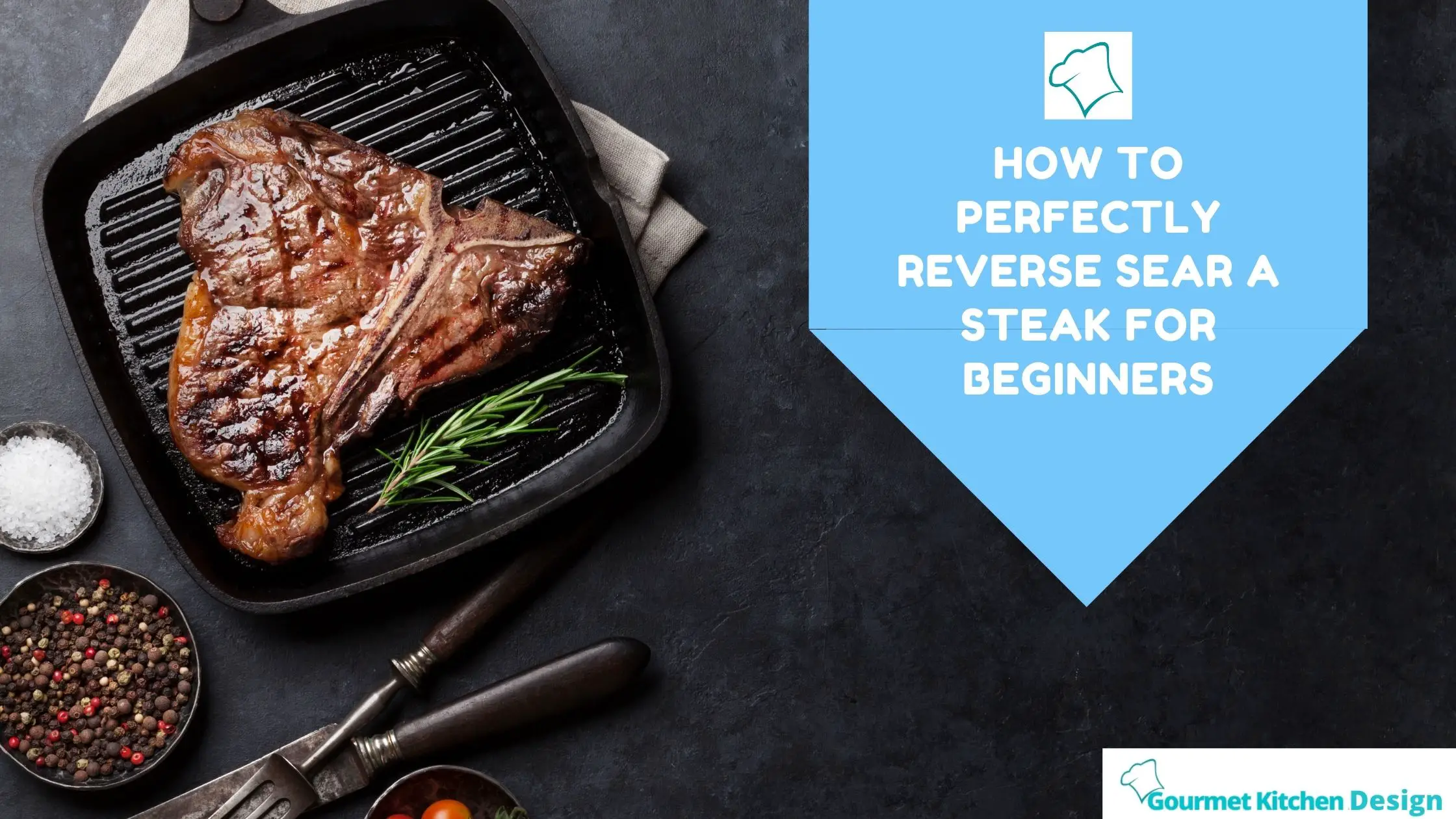Reverse searing a steak will change the way you cook steak forever! Especially if you sear it on a cast iron skillet (my favorite is from the Le Creuset brand!). Here is how to perfectly reverse sear a steak- even if it’s your first time.
Why reverse sear? We all want tender, juicy meat, and a delicious, seared crust when making steak. The reverse sear method is one of my favorite steak-cooking techniques.
I used to be confused about how those 5-star restaurants could serve such a perfect steak. And when I do one on my own, it’s a totally different thing!
I’m not a beginner in the kitchen. And I would love to perfect my steak, so I went online and found out about this reverse sear a steak.
I never heard of that, but I know sear roasting a steak. You’ll start cooking the steak on the stove in a cast-iron skillet and finish it in the oven.
So, what is a reverse sear steak? Let’s dive right into it!
What Is Reverse Sear A Steak?

You’ll most likely pan-sear a thick cut of filet mignon or ribeye. Which is the traditional way of a golden crust with a pink center.
However, let’s face it. Sometimes you get the temperature right, and the beef is too rare or slightly overdone. It can be frustrating to pay a lot for a lousy steak.
The good news is that using the reverse sear a steak method will give you a better chance of getting a perfect steak with great taste.
Reverse Searing Steak is a simple and effective way to make restaurant-style steak at home. A perfect steak for a wine night with friends is possible using your oven and stovetop.
Instead of crisping the outside edges first and then finishing the cooking in the oven to the right temperature. In this method, the cooking comes first, followed by the searing.
What Are The Benefits of Reverse Sear A Steak?

Evenly Cooked
Some people prefer to reverse sear a steak because it cooks evenly from the inside to the outside. If you don’t like a lot of pink in the center, this method is for you.
With the traditional cooking method of a very thick steak, achieving a medium or even medium-rare level of doneness can be difficult. But with the reverse sear method, it’s simple!
Better Browning
To achieve better browning, you must trigger the Maillard reaction, a chain of chemical reactions that occurs when proteins and sugars are heated to high temperatures.

When searing a steak, the idea is to keep the temperature and evaporation rates as low as possible. You may quickly fill them up and proceed to the important browning step.
More Flavor
There are seasoned juices released as the steak cooks in the oven. You can use the drippings to top the steak or drizzle the juices over the vegetables or carbs you’re serving with it.
What Are The Disadvantages of Reverse Sear A Steak?

Not the Right Choice for all Steaks
One of the major disadvantages of the reverse sear is this method is not suitable for thin steaks. Thin steaks cook quickly no matter what method you choose, so trying a reverse sear could result in an overcooked steak.
More Prep Time
It may take a little longer to sear a steak using this method. If you’re short on time or simply want to cook your steak as quickly as possible, sear it in a cast-iron pan or on the grill.
However, if you have a thick cut that will need to go into the oven for a few minutes after you sear it, the timing will be similar.
No Base for Pan Sauces
This method does not leave behind those delicious brown and crispy bits in your pan that you can use to make a butter and spice pan sauce. However, this recipe is delicious with or without a sauce!
Check out the video below!
Why Reverse Sear A Steak Is A Must Try?

- You can enjoy evenly cooked steaks instead of having overcooked steaks in some areas.
- It prevents a gray edge with an even inside pink color.
- The meat is more tender and moist because of the oven’s low-temperature, slow cooking process.
- Better browning on the outside.
- There is no need for expensive cooking equipment.
- During the finishing, searing process, you can add your favorite herbs to the butter, which will infuse the steak with amazing flavor.
Reverse Sear A Steak Time Chart

The Best Cuts To Use For Reverse Sear A Steak

- Ribeye
- Filet Mignon
- Strip Steak
- Tomahawk Steak
- T-bone Steak
- Big NY Strip
- Large Sirloin Steak
Tip: This method works best if your steak is at least 1 pound and 1 and ½ inches thick.
How To Reverse Sear A Steak?
- Step 1: Preheat the oven to 275 degrees Fahrenheit
- Step 2: Season your steak on both sides using your favorite seasoning
- Step 3: Insert a meat thermometer into the steak’s side. I recommend using Meater’s smart thermometer. It’s wireless for hassle-free cooking, and you can use your phone to operate it!
- Step 4: Place the steak on an oven-safe pan and into the oven
- Step 5: When the steak’s internal temperature reaches 125 degrees Fahrenheit, remove it from the oven. Allow 10 minutes for the meat to rest
- Step 6: Sear the steak for one minute on each side in a hot skillet. For medium-rare, the final internal temperature should be 145 degrees Fahrenheit
People Also Ask
Should I flip steak when reverse sear?
Not necessarily. A steak would be seared in a restaurant using extremely high heat before being finished in an oven using a lower heat until it was done.
Should you salt steak before reverse sear?
Make sure to season the steak properly (coarse kosher salt always works best). The salt denatures the surface protein structure of the steak if you let it sit for 10 minutes or so before cooking, which helps to retain the steak’s flavorful juices.
How should You season my steak?
To ensure that every inch of the steak is seasoned, rub a generous amount of salt and freshly ground black pepper on both sides and edges. Salt shouldn’t pile up on the meat, but it should cover it. Putting salt and pepper on the steak is like putting on a T-shirt made of salt and pepper.
Conclusion
It’s finally steak night after a long day at work! You cook them with the best of intentions and knowledge at your fingertips. Grill, cook on the stovetop, whatever makes you feel most comfortable.
And then when you cut it with a sharp knife. Gray. Dry. Sad.
You’ll go through the stages of grief as the loss of pure beef flavor and your hard-earned money.
But those stages of grieving are over for me! I’ve been happily experimenting with the “reverse sear” method ever since. It is also my favorite method of preparing steak at the moment.
At a low and slow temperature, the cooking method will provide a perfect medium-rare result. It’s like you’re dining at the best steakhouse in town!
And to complete your steak night, serve it with a glass of wine and some exquisite caviar.
What’s the doneness you prefer for your steak? Let me know in the comments!


